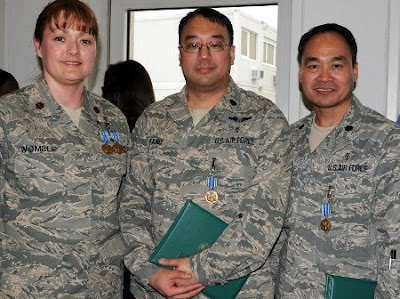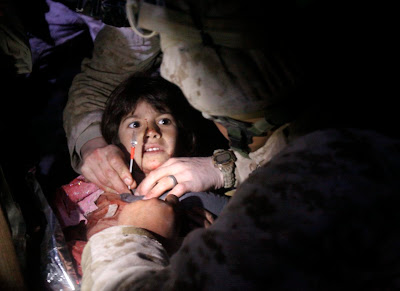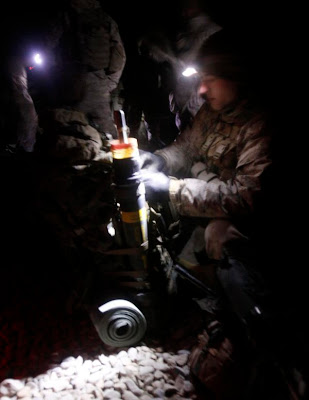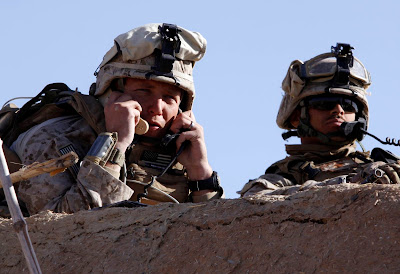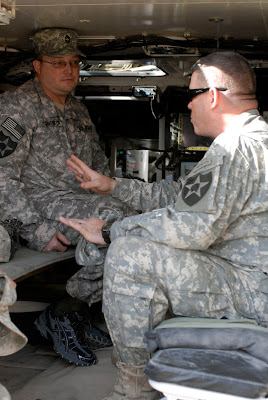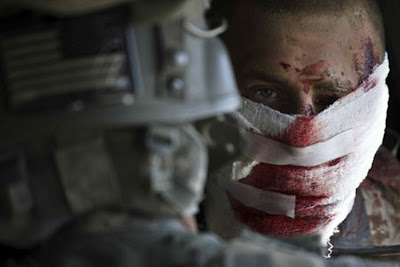
Wounded U.S. Marine Sgt. Shane Hanley of Punxsutawney receives treatment from U.S. Army flight medic Sgt. Michael G. Patangan while airborne in an army Task Force Pegasus medevac helicopter shortly after Hanley was wounded on Feb. 9 in southern Afghanistan. AP photo, likely from Brennan Linsley.
Oorah!
A Punxsutawney woman says Taliban forces might have taken her son out of the fight — but they didn't take the fight out of her son.
Marine Sgt. Shane Hanley, 21, a squad leader from Easy Company, 2-2 Marines, suffered shrapnel injuries to the left side of his body when an improvised explosive device detonated Feb. 9 in Afghanistan, said Diane Hanley.
Shane underwent surgery Thursday — his fifth operation since being wounded — at Bethesda Naval Hospital in Maryland, where physicians are trying to save the vision in his left eye, his mother said. Surgery is scheduled next week to repair a ruptured eardrum.
Hanley was leading a squad of 11 Marines on foot patrol in Garmsir City when a tripwire detonated the IED, his mother said.
"He actually was unconscious for a little while. When he woke up, he did not want to be on the gurney when they took him to the bird (the casualty evacuation helicopter). He wanted to walk," Diane Hanley said from her son's bedside yesterday.
"I asked him: 'I heard you walked to the bird.' His eyes were closed but he shook his head yes. I said, 'I bet that was your way of giving your men the thumbs up and the Taliban the middle finger.' He whispered, 'I ran to the bird.' He wanted (Taliban forces) to see him walking away so they didn't think they got the best of him."

